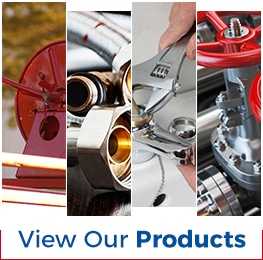
Hoses are used for many applications in the marine industry. They’re critical for several maritime operations. In this blog, we will focus on the hoses used for ship-to-ship servicing, such as bunkering and lightering.
BUNKERING HOSES
Bunkering refers to the process of supplying fuel to ships. This term is commonly used in the maritime industry and involves the transfer or ‘bunker’ fuel oil from storage facilities (bunker barges, shore tanks)into the fuel tanks of a vessel. Bunkering ensures vessels have the necessary fuel to reach their destination.
Bunkering hoses are specialized hoses designed to transfer fuel oil from storage facilities to ships. These hoses must comply with international standards and regulations to ensure safety and environmental protection. Most bunkering hoses are designed to float on the water, even when they’re being used to transfer oil and other fluids.
Bunkering hoses need to be flexible enough to maneuver during the bunkering process, resistant to degradation from various types of fuels and oils, and able to handle high pressures. The size and length of a bunkering hose depend on the specific bunkering setup and requirements of the vessels and storage facilities involved.
There are two types of bunkering. Fueling a ship while it is docked at a port is referred to as “in-port bunkering.” “Offshore bunkering” is fueling a ship at sea, typically using a bunker barge.
LIGHTERING HOSES
Lightering is the process of transferring cargo, usually crude oil or petroleum products, from a large vessel, such as a supertanker, to smaller vessels called lighters. This is typically done when the large vessel is too large to enter a particular port or navigate certain waterways due to depth or size restrictions. Lightering helps facilitate the efficient and safe transport of cargo to its final destination.
Lightering operations are subject to strict regulations to prevent spills and environmental damage. The hoses, pumps, and other equipment used must meet high safety standards to ensure leak-free and spill-free transfers. These regulations are enforced by maritime authorities such as the U.S. Coast Guard and the International Maritime Organization (IMO).
Lightering allows for the use of larger vessels for long-haul transport while still delivering cargo to ports with size restrictions. The process reduces the need for extensive dredging of ports and channels to accommodate larger vessels. It provides flexibility in logistics and supply chain management, allowing cargo to be distributed to multiple ports as needed.
Lightering hoses are constructed to endure the demanding conditions of these transfers. They must be durable, flexible, strong enough to handle the high pressures of transfer, and resistant to the chemicals they transport. To prevent accidental fires, lightering hoses must have a resistance low enough to dissipate electrostatic charges, but high enough to prevent transmission of large stray currents.
HOSES AND HOSE FITTINGS FOR MARINE APPLICATIONS
ASJ Industrial Hoses & Fittings offers a wide selection of hoses specifically designed to withstand the rigors of the marine environment. We’ve been serving businesses in the marine industry since 1982. Call us today to discuss your product requirements – our helpful staff is here to help you find the hoses and hose fittings that best suit your needs.



 Phone:
Phone: